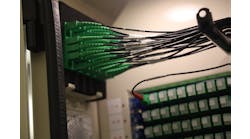By Lisa Cohn
Rhode Island is often the butt of jokes about its size, a lot of them having to do with an inability among residents to screw in electric light bulbs. But when it comes to energy policy, the state has often loomed large, even if few people notice.
For example, it was Rhode Island that led the way with electric industry restructuring in the 1990s. California and Massachusetts usually get the credit.
And more recently, the smallest state in the nation became a big innovator in energy efficiency policy. Rhode Island in 2006 passed a law that requires National Grid https://www.nationalgridus.com/narragansett/, its major electric utility, to eke out all cost-effective energy efficiency before turning to power plants for generation.
The law was slow to ramp up, but is now getting under way. The state Public Utilities Commission is putting together rules to make it work. http://www.ripuc.org/eventsactions/docket/3931page.html
A few other states have made similar attempts, but eventually “settled” for less efficiency than was available, according to Andrew Dzykewicz, state energy czar, in a recent letter updating state regulators on the plan. Rhode Island, on the other hand, intends to go after energy, capacity and system cost savings to assist all customers: residents, institutions and commercial & industrial operations.
Rhode Island also is unusual in that it links the need for efficiency with the requirement to maintain a reliable electricity delivery system. Along with coming up with a comprehensive efficiency plan, National Grid must seek out ways it can integrate into its transmission and distribution system alternative technologies, like combined heat & power, distributed generation, renewable energy, demand response and efficiency.
State regulators continue to work out details, but look to July 15, 2008 as a major milestone. On that date the Rhode Island Energy Efficiency and Resource Management Council will file an energy efficiency “opportunity report “ with the Public Utilities Commission. The report will help determine how National Grid proceeds.
Once the program gets going, maybe the jokes will be more flattering, as in: How many Rhode Islanders does it take to screw in a light bulb? Not very many, since they hardly ever need to change their light bulbs, given how highly efficient they are.
Visit writer Lisa Cohn at www.realenergywriters.com, pick up her free Energy Efficiency Markets newsletter and listen to her Energy Efficiency Markets podcast.






